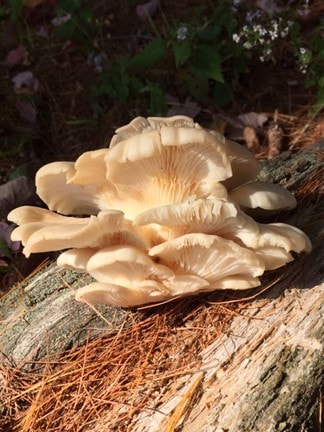|
I was putting old chandelier crystals on my little Norfolk Island pine as I do every year around this time of year to honor all evergreens. It was almost November. I recalled a childhood experience… my little brother and I used to clink the beveled crystal pieces together in order to hear the music they produced when adults weren’t paying attention. Now each crystal shimmered like liquid rain caught by the late afternoon light. Suddenly a loud crash and thump interrupted my reverie. Oh no, a bird had hit the window – hard. I raced out the door. Yellow talons shuddered, but the hawk was dead when I reached it.
Hawk is considered to be a Messenger from the dead by some Indigenous peoples – and the tidings the bird brings may be positive or negative… Hawks speak to power and they are also predators. In my life, hawks appeared the day I buried my brother; I also found a dead one on the day my mother died. Context fleshes out the individual tale… I brought the sharp shinned hawk in the house to examine it in detail; later I buried it outside my window. Close up it was easy to identify this hawk. He had a small head, a squared tail, short wings, and spindly yellow talons. This one was quite large and brown with yellow eyes (adults have orange to red eyes) so I knew it was a young female; they are sometimes almost twice the size of males. Some are large enough to be confused with the Coopers hawk who look almost exactly like the Sharp shinned hawk except for size; the former has a larger head and a more rounded tail. The Sharp shinned hawk is the smallest of the three Accipiter hawks; the other two are the previously mentioned Cooper’s hawk and the large grey Goshawk. I have seen all of them in flight or perched on a fruit tree near the house; I have also seen them in Abiquiu during the winter.
0 Comments
 This year I have spent a lot of time in the woods to escape the parched earth and the relentless heat during the hottest summer I ever remember. In the woods it was still cool and moist, and although mushrooming was poor overall, I still found some of these fungal fruiting bodies growing in the usual places. Recently I was delighted to discover an oyster mushroom cluster growing on a dead poplar tree. I love these pearl white oysters because of their graceful clustering shapes, and of course, they are edible – especially tasty when young. They first begin appearing in June and can be found throughout the summer and sometimes, like this year, during the fall. How does drought affect the timing of emerging mushrooms, I wonder. Does the underlying mycelium take advantage of rains that come at unusual times and begin fruiting when conditions are right? We have two common species of oyster mushrooms that grow in our area –Pleurotus populinus grows only on poplar and aspen trees. It has a white spore print and an ivory colored fruiting body and P. ostreatus grows on hardwoods like sugar maples and beech. It has wheat or grayish caps, and a lavender spore print. This latter species is more common in the fall. |
Submit your ideas for local feature articles
Profiles Gardening Recipes Observations Birding Essays Hiking AuthorsYou! Archives
October 2025
Categories
All
|

 RSS Feed
RSS Feed